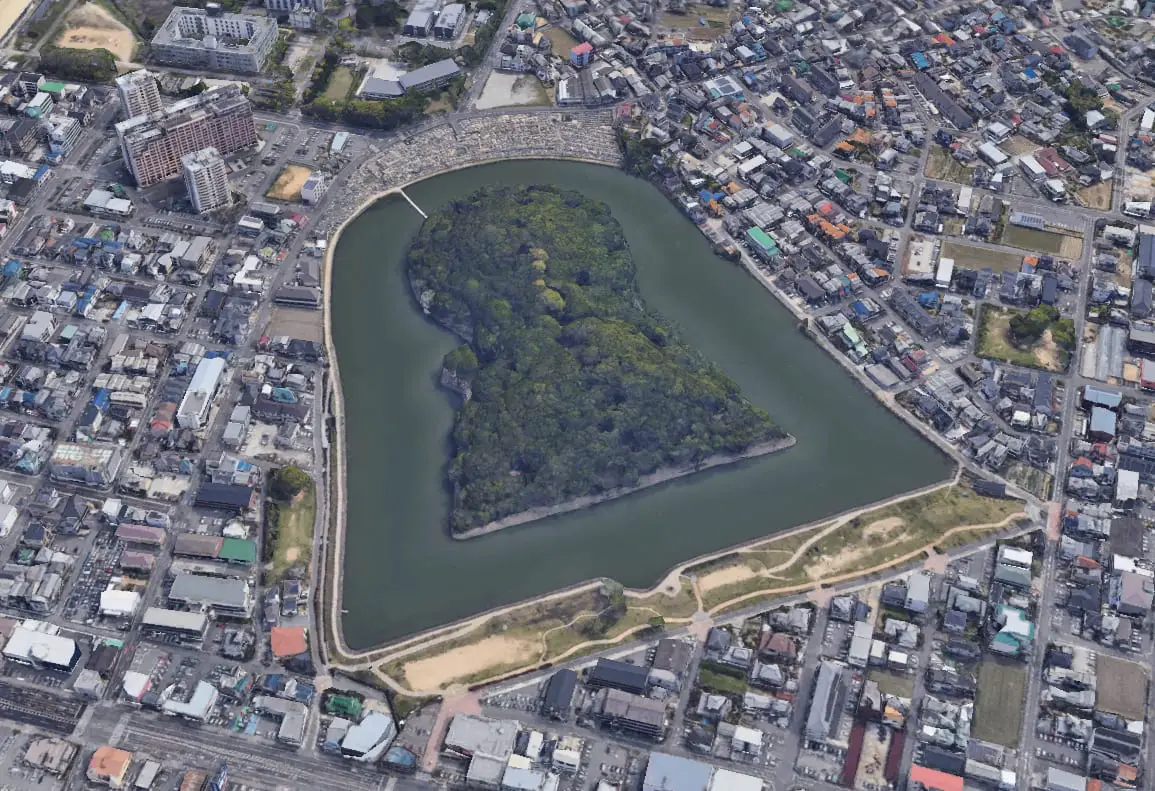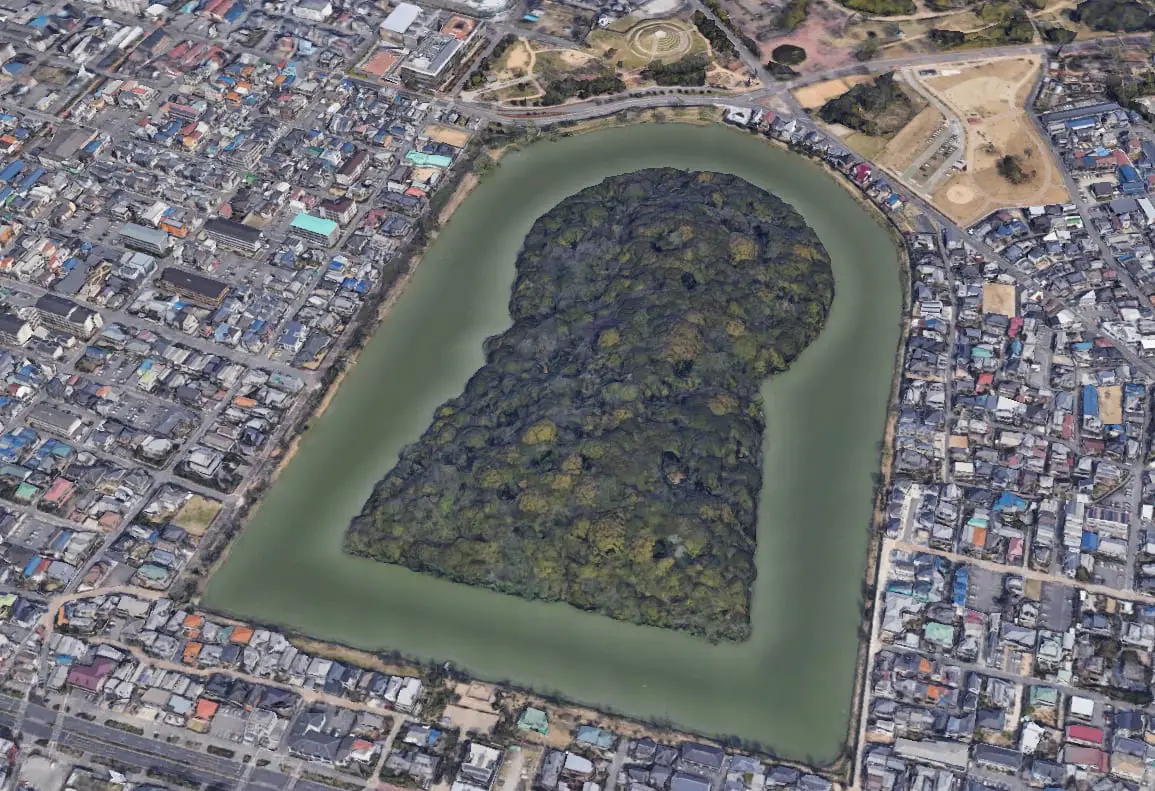The Mozu Kofungun burial mounds are a cluster of keyhole shaped tomb complexes that were constructed during the Kofun period in present-day Sakai, located in the Osaka Prefecture of Japan.
The Kofun period lasted from AD 300 to 538 and was named after the Kofun burial practice of constructing enormous funerary mound enclosures for members of the ruling class.
The tradition of constructing Kofun tombs started during the late 3rd century AD, with the most common form being known as a “zenpō-kōen-fun”, which are distinctively shaped like a keyhole, having one trapezoid end and one circular end mound.
Many Kofun measure several hundred metres across with a surrounding moat, and were protected by terracotta figurines known as haniwa, to substitute real world objects and display the wealth and status of the individual interred.

In the centre of the mounds circular feature was the funerary chamber, a stone-lined group of megaliths where the deceased was placed inside a wooden coffin, alongside iron made objects such as arrowheads and swords, and gilded bronze objects such as horse tacks and sash buckles.
The Mozu complex used to contain over 100 tombs of various size and form, but due to the rapid development of residential land in Sakai after World War II, more than half of the tombs were destroyed.
Of the 40 tombs that survive, the most notable are the burial complexes that the Imperial Household Agency (IHA) associates with the “legendary Emperors” of the 5th century, Emperor Nintoku and Emperor Richū.

The largest is Emperor Nintoku’s Kofun known as the Daisenryo Kofun, in which the mound measures around 500 metres in length, enclosed by three moats and an 840-metre-long outer fortification, and covers an area twice as long as the base of the Great Pyramid of the Pharaoh Khufu (Cheops) in Giza.
According to the IHA, the tombs are more than a mere repository for historical artifacts; they are sacred religious sites. IHA construes each of the Imperial grave sites as sanctuaries for the spirits of the ancestors of the Imperial House, and maintains the Imperial Kofun as protected monuments off-limit from the general public.
Header Image : Daisenryo Kofun – Image Credit : National Land Image Information (Color Aerial Photographs), Ministry of Land, Infrastructure, Transport and Tourism – GFDL License





